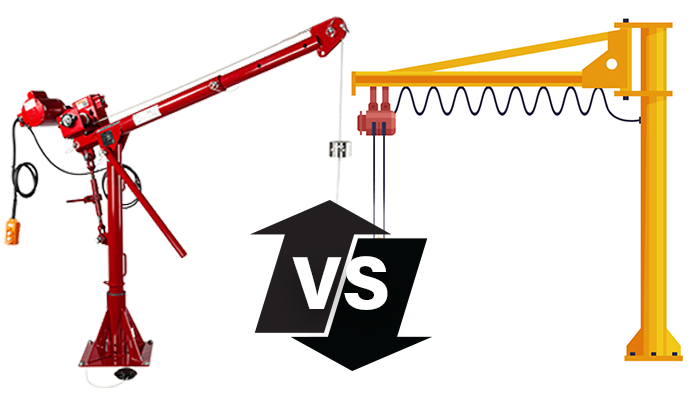- Home
- Latest News
- DAVIT CRANE VS. JIB CRANE: A BREAKDOWN
DAVIT CRANE VS. JIB CRANE: A BREAKDOWN
Sunday 16th May 2021
Davit Crane vs. Jib Crane
The terms davit crane and jib crane are often used interchangeably. This is most likely because they have some similar characteristics and uses. A davit and a jib are both typically made of steel and are used to lift or lower equipment in a variety of settings. However, the similarities end there. Here are the main differences between a Davit Crane vs. Jib Crane, as well as why a davit crane could be a better option.
Davit Crane vs. Jib Crane: What’s the Difference?
While a jib crane is suitable for some situations, a davit crane may be the better choice. Here’s why:
The Davit Crane:
-
For mounting a davit crane, only six inches of reinforced concrete or other suitable material is needed.
-
Davit cranes, particularly those made with lightweight components, are usually more portable than jib cranes.
-
They are ideal for long-distance lifts since the wire rope is captured on a winch drum. Furthermore, the wire rope hoist lifts at a higher rate than a chain hoist.
-
A telescoping boom and an adjustable boom angle increase the flexibility of a davit crane.
-
Operation of a davit crane with a winch is easier than the typical chain hoist on a jib crane. This is because the winch is located on the back of the crane versus at the load.
-
The boom can be rotated on the davit crane with a handle safely away from the load.
-
A davit crane can be more customizable. With a variety of finishes and base type options, it’s easy to find a davit crane that will fit a specific lifting problem no matter the environment.
The Jib Crane:
Although the word “jib crane” is used to describe several cranes, it does have some distinguishing characteristics:
-
Jib cranes are more costly and less versatile than davit cranes.
-
A jib crane usually necessitates a footing that is both poured and deep. This raises the cost compared to a standard davit crane installation, which is normally anchored to a concrete slab.
-
Since it normally has a fixed location, as well as a fixed boom, a jib crane loses flexibility.
-
Since they primarily use a chain hoist, they are not well suited for longer lifts, particularly because the chain hoist’s speed is slow.
-
A boom rotation is achieved by reaching out and pulling the load, making it not the safest solution to a lifting problem.
The Decision is Clear!
When it comes to a davit crane vs. jib crane, the functionality and adjustability of a davit crane often beat the expense and rigidity of a jib crane.
Regardless of your lifting problem, the experts at Prolift handling can help you select the best solution. A safer and more productive work environment is only a phone call or email away!
Post Content Credits: Thern Inc
Prolift Handling are official distributor for Thern winches and cranes in Ireland. Click here to check out the different types of cranes we offer from Thern Inc.

